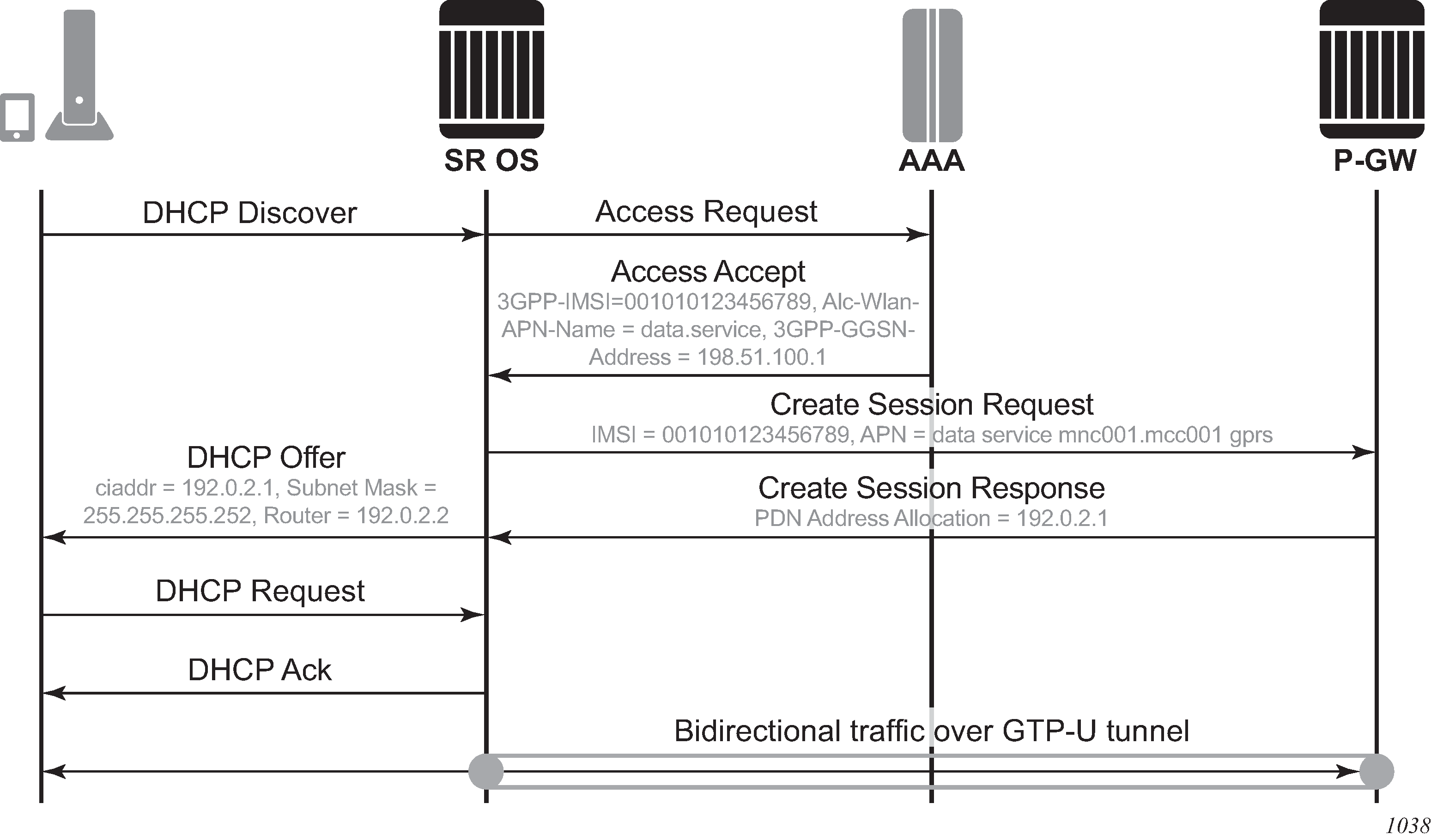A GTPv2 session or GTPv1 PDP context is set up when IPoE session authentication includes any GTP parameters. The GTP session provides the IPv4 and IPv6 address used for the connecting host. Currently only DHCPv4 and SLAAC are supported to deliver these addresses back to the client. If DHCP is used, SR OS automatically derives a standards-compliant subnet mask and default gateway from the signaled IP address. It is important that all GTP subscribers are in a shared split-horizon domain and that there is no Layer 2 switching between GTP subscribers. Only a single IPoE session is supported per GTP subscriber. Additionally, DNS and NBNS can be signaled via GTP (A)PCO and reflected in DHCP, SLAAC, and stateless DHCPv6. Control plane packets such as DHCP and ICMPv6 RS are always terminated on the BNG and are not forwarded over GTP.
Figure: IPoE session shows a sample IPoE session for GTP.

GTP without an IPoE session is available for IPv4 DHCP leases only for backwards compatibility. It may not be used for new deployments; existing deployments should move to the IPoE session concept.